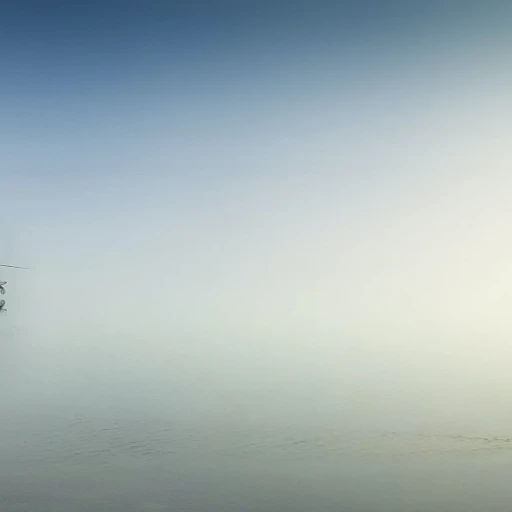
The legendary giants: a look at the biggest fish ever caught
Monstrous fish bringing legends to life
Did you know the largest fish ever caught is not a shark? Believe it or not, fishermen around the globe have made some jaw-dropping catches, from the depths of the oceans to the broad rivers and lakes. These legendary giants aren't just tales from old sea captains; they're documented feats that have stunned the world.The iconic Great White Shark caught off the coast of Australia by Alfred Dean in 1959 weighed a staggering 2,664 pounds. Dean used a rod and reel to accomplish this Herculean task, making it one of the most famous catches ever recorded by the International Game Fish Association (IGFA). However, this is just the tip of the iceberg.
In 1979, off the shores of Nova Scotia, Ken Fraser made another historic catch, landing a Bluefin Tuna that tipped the scales at 1,496 pounds. Unlike the terrifying sharks, this catch highlighted the diversity of giant fish species lurking beneath the waves.
Freshwater giants also have their legends. For instance, the Mekong Giant Catfish, native to Southeast Asia, can reach lengths of up to 10 feet and weigh over 600 pounds. Reports from Thailand document catches exceeding 646 pounds, making them some of the biggest freshwater fish caught.
Don't overlook the Wels Catfish in Europe, either. These behemoths can reach over 700 pounds and lengths stretching beyond 8 feet. Anglers have long swapped stories about the massive catfish lurking in the rivers of Italy and Spain.
These incredible catches aren't just personal triumphs – they’re defining moments in angling history and continue to inspire new generations of fishermen. With each record broken, we see the sheer power and mystery of the marine world brought to life.
To delve deeper into the stories behind these captures and the records set by these titans of the waterways, learn about the biggest fish ever caught (not shark).

- + Carbon Fiber construction for lightweight and durability
- + Telescopic design for easy transport
- + 12 + 1 Shielded Bearings for smooth operation
- + Stainless Steel BB for rust resistance
- + Includes carrier case for storage
The role of the IGFA in verifying world records
How the International Game Fish Association (IGFA) ensures fair play
The International Game Fish Association (IGFA) serves as the world’s authority on recreational angling records. This nonprofit organization, established in 1939, is headquartered in Florida, USA. It standardizes and maintains angling rules and regulations, ensuring that every catch submitted for record consideration meets specific criteria. These rigorous standards help maintain the credibility and authenticity of world records.
For a catch to be recognized by the IGFA, it must undergo a meticulous verification process. Factors such as the correctness of the angling methods used, the type of equipment, and the species identification are scrutinized. A formal application must be submitted with detailed information including the tackle and techniques used, the exact weight of the fish, and photographs verifying the catch. A crucial part of this process also involves submitting a segment of the fishing line used to confirm it meets the appropriate class regulations.
Why anglers trust IGFA verification
Anglers around the world place their trust in the IGFA due to its stringent and transparent verification process. The IGFA’s role is not merely regulatory; it extends to safeguarding the sport’s integrity and promoting ethical angling practices. Research and reports curated by the IGFA, such as the annual World Record Game Fishes book, provide valuable insights and a database of recognized records, enhancing knowledge and fostering appreciation for the sport. In fact, Ken Fraser’s record bluefin tuna caught off Nova Scotia is extensively documented and validated by the IGFA.
Ensuring ethical practices
The IGFA also emphasizes conservation and ethical angling practices. Catch-and-release fishing and the use of non-invasive methods to handle fish are promoted to preserve fish populations. By supporting these practices, the IGFA ensures that the thrill of catching one of the biggest fish can be enjoyed by future generations without jeopardizing the species.
Controversies and the IGFA's role
The IGFA has not been without its share of controversies. Discrepancies in weight measurements, disputes over the classification of certain catches, and the occasional ethical violation challenge the organization's authority. However, their commitment to transparency and continuous improvements in their verification processes help address these issues effectively, maintaining their position as a trusted body in the angling community.
Case studies: famous record-breaking catches
Ken Fraser and the legendary bluefin tuna
In October 1979, Canadian angler Ken Fraser set an unbeatable fishing record. Off Nova Scotia, Canada, Ken hooked a colossal bluefin tuna weighing an astonishing 1,496 pounds. This catch remains the world record for the largest bluefin tuna ever caught on a rod and reel. This record isn't just a number; it's a testament to stamina, skill, and sheer fishing passion.
Alfred Dean and the great white shark
The 1959 capture by Alfred Dean off Ceduna, Australia, continues to generate awe. With his sheer hydraulic effort and robust fishing techniques, Alfred managed to reel in a gigantic great white shark weighing an incredible 2,664 pounds. The astonishing size of this catch highlights the magnitude of species found in Australian waters.
The mammoth Mekong giant catfish
In June 2005, fishermen in Thailand captured one of the largest freshwater fish ever recorded. The 646-pound Mekong giant catfish they caught was not only a massive feat but also a revelation of the diverse aquatic life in the Mekong River.
The elusive greenland shark
Greenland sharks, often lurking in the cold waters of the North Atlantic, have yielded some monumental catches. In the frigid waters off Norway, a hefty greenland shark weighing over 2,200 pounds was caught, drawing attention to this mysterious and ancient species.
Challenges on the Florida coast
Florida, known for its rich and varied fishing grounds, saw an extraordinary event in 1986. Angler angler's patience and fishing prowess were put to the test when capturing a tremendous tiger shark weighing 1,780 pounds. This feat not only spotlighted Florida's marine biodiversity but also the potential for record-breaking catches along its coastline.
Species spotlight: the largest fish species ever caught
Majestic marlins: titans of the open sea
When it comes to the giants of the ocean, marlins hold a special place. The Atlantic blue marlin, a creature of immense beauty and power, is one of the largest species of fish ever caught. The record for the biggest Atlantic blue marlin was set by Paolo Amorim in 1992, who reeled in an astonishing 1,402 pounder off the coast of Brazil.
The Pacific blue marlin also holds its ground when it comes to size. In 1982, Jay de Beaubien caught a colossal 1,376-pound marlin in Hawaii, a record that stands to this day. These incredible feats have cemented marlins as one of the premier game fish for anglers seeking the ultimate challenge.
Great white shark: the king of the sea
Few species command as much awe and terror as the great white shark. In 1959, Alfred Dean achieved the unimaginable by catching a 2,664-pound great white off the coast of Ceduna, Australia. This record still holds as the largest fish ever caught by rod and reel, showcasing the sheer might of these apex predators.
Giant freshwater wonders: the mekong giant catfish
In freshwater, the mekong giant catfish reigns supreme. This species holds the title for the largest freshwater fish caught, with an astonishing 646-pound specimen caught in Thailand in 2005. This remarkable catch highlights the mekong giant catfish's dominance in the rivers of Southeast Asia.
Greenland sharks: the enigmatic giants
In the cold, dark waters of the North Atlantic and Arctic Oceans, the greenland shark lurks. Known for their slow movement and incredible lifespans, these mysterious giants are among the biggest creatures in the ocean. Angler Holger Andersen caught a 1,708-pound greenland shark off Norway in 1987, showcasing the immense size these fish can reach.
Bluefin tuna: the ocean's silver torpedoes
The bluefin tuna is revered not just for its size but for its speed and strength. Ken Fraser's catch of a 1,496-pound bluefin tuna off Nova Scotia in 1979 remains a legendary achievement in competitive fishing. These fish are highly sought after not only by sports fishermen but also by the seafood industry due to their rich, flavorful meat.
Techniques and tackle: how anglers catch giant fish
Mastering the art of catching giants
When it comes to landing the biggest fish in the world, the right technique and tackle can make all the difference. Whether you're wrangling a gigantic bluefin tuna or a monstrous great white shark, having the right tools and know-how is essential.
One of the most famous cases is Ken Fraser, who caught a colossal 1,496-pound bluefin tuna in Nova Scotia in 1979. Fraser's exceptional catch is still the biggest fish ever caught using rod and reel. He used a heavy-duty rod and reel specifically designed for big game fish, paired with a chair to secure himself during the battle.
Choosing the right tackle
Choosing the appropriate tackle varies depending on the type of fish you're targeting. For instance, when pursuing giant freshwater species like the mekong giant catfish found in Thailand, anglers often use robust spinning reels and heavy braided lines. In contrast, targeting massive saltwater species such as the Atlantic blue marlin or the tiger shark off the coast of Florida requires specialized trolling gear and high-capacity reels.
According to the International Game Fish Association (IGFA), which meticulously records world fishing records, your tackle must meet stringent criteria to qualify any catches for world records. This includes the types of rods, reels, lines, and hooks used. For example, Alfred Dean holds the record for catching a 2,664-pound great white shark off the coast of Australia in 1959, using heavy-duty tackle specifically approved by the IGFA.
The importance of technique
Mastering specific techniques is equally crucial. Anglers pursuing monster fish often employ tactics such as live baiting, trolling, and chumming. Live baiting involves using a live fish on the end of the line, attracting larger predators by mimicking natural prey. Trolling, on the other hand, involves dragging bait or lures through the water from a moving boat, covering more area and attracting fish that follow schools of smaller fish.
Expert anglers like Alfred Glassell Jr., who caught the largest black marlin weighing 1,560 pounds off Cabo Blanco, Peru, in 1953, are known for their skillful use of these techniques. Glassell's marlin was caught by trolling a carefully chosen baitfish, demonstrating the success that comes from blending the right equipment with expert technique.
In conclusion, catching the biggest fish in the world requires a combination of the right tackle and mastered techniques. Whether it's fishing for a massive wels catfish in Europe or tackling a giant blue marlin off the coast of Hawaii, the preparation and knowledge that go into these record-breaking endeavors are key to success.
Geographical hotspots: where the biggest fish are caught
Global fishing hotspots
Anglers around the world know that certain hotspots prove irresistible when it comes to catching record-breaking fish. These places have built reputations for hosting the giants of the sea and freshwater, attracting fishermen with dreams of landing the catch of their lives.
Puerto Cabello, Venezuela
Known for its prolific waters, Puerto Cabello has been a prime location for some of the most impressive catches. The Atlantic blue marlin, a titan in the deep blue, has made history here. Angler Paulo Amorim reeled in a staggering 1,402-pound Atlantic blue marlin, setting a record recognized by the International Game Fish Association (IGFA).
Ken Fraser's Nova Scotia
Nova Scotia, Canada is another legendary spot. This region etched its name in fishing history when Ken Fraser snagged a behemoth bluefin tuna weighing 1,496 pounds in 1979, also verified by the IGFA. Such massive catches are not just rare, but they highlight the rich marine biodiversity present in these cold Atlantic waters.
Thailand's Mekong River
The Mekong Giant Catfish is one of the largest documented freshwater fish, with notable catches recorded in Thailand. A remarkable instance was in 2005, when fishermen captured a Mekong Giant Catfish weighing an incredible 646 pounds. This catch underscores the river's reputation as a hotspot for enormous freshwater species.
Cabo Blanco, Peru
Cabo Blanco needs no introduction for seasoned anglers. This Peruvian location is famous for its record-setting black marlin. Alfred Dean's 1953 record of a 1,560-pound black marlin still stands today, drawing fishing enthusiasts from around the globe.
Hawaii's Great Waters
Hawaii, particularly around Kona, is cherished for its Pacific blue marlin. Angler Gary Merriman's 1,376-pound catch is among the top records logged here, reinforcing Hawaii's status as a premier destination for marlin fishing.
Florida's Shark Haven
The coastline of Florida has seen numerous monumental catches, particularly involving various shark species. One notable instance includes the 884-pound tiger shark caught by Walter Maxwell off the coast of South Carolina, part of the larger Florida fishing area. The shark season in these waters continues to attract those seeking an adrenaline-pumping angling experience.
Conclusion
As these geographical hotspots indicate, record-breaking fishing isn't confined to one region or type of water. Every significant catch holds a story of perseverance and skill, set against the backdrop of some of the world's most bountiful and challenging waters. For aspiring and seasoned anglers alike, visiting these locations could just be a bluefin tuna, giant catfish, or marlin jump away from their own record-breaking moment.
Controversies and debates in record-breaking fishing
Disputed records and verification challenges
diving headfirst into the contentious waters of record-breaking fishing, one quickly discovers that not all world records are free from controversy. take for example the sprawling case of the tiger shark caught by renowned angler Walter Maxwell in 1964. this monster weighed in at a staggering 1,780 pounds, but some have since questioned the accuracy of the weigh-in, sparking furious debates among fishing enthusiasts.
Geographical discrepancies in weighing techniques
another point of contention arises from geographical differences in weighing methodologies. anglers in thailand, especially those targeting the colossal mekong giant catfish, often employ methods differing from those used by their counterparts in the united states or australia. this variance can lead to disputes about the legitimacy of certain records, calling into question the universally accepted norms of fish weighing.
The role of technology in modern fishing
in today's fishing arena, technology plays a dual role. while it aids in accurate measurements and verifications, its increasing sophistication has also led to suspicions and allegations of record-tampering. the advent of high-tech weighing scales, drones, and imaging tools ensures precise recording, but concurrently raises doubts about the authenticity of documentation, especially when not overseen by internationally recognized bodies like the IGFA.
Ethical debates surrounding catch-and-release
the ethics of catch-and-release practices are an ongoing subject of debate. while many conservationists argue for the humane treatment and subsequent release of record-breaking catches, some traditionalists maintain that holding onto such catches is essential for documentation and verification. this tension creates friction between preservationists and record seekers, highlighting a need for clear and fair guidelines.
Input from veteran anglers
veteran anglers like Ken Fraser, who famously caught an Atlantic bluefin tuna weighing 1,496 pounds off the coast of Nova Scotia in 1979, weigh in on these debates with insights born from years of experience. Fraser, among others, advocates for standardization in measuring and recording techniques, emphasizing the importance of consistency across different regions.
Public opinion and media influence
public opinion, often shaped by media portrayals, wields significant influence in these controversies. stories of record-breaking feats, circulated through platforms like fishing-magazine.net, can elevate or diminish the perceived authenticity of certain catches. media scrutiny and public discourse play pivotal roles in the ongoing debates surrounding the world's largest fish catches.

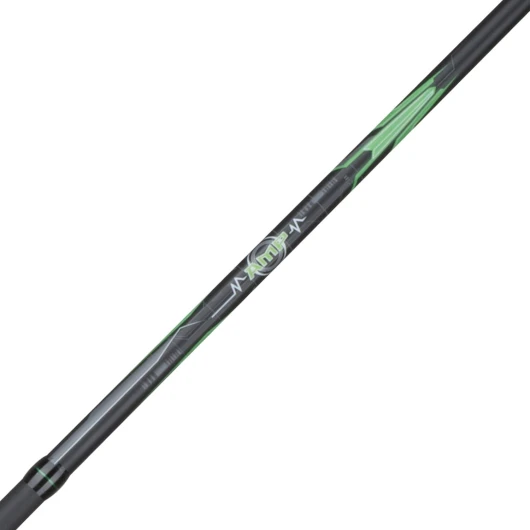





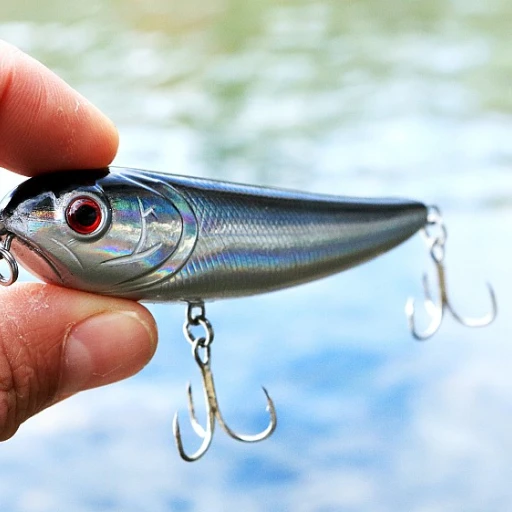
-large-teaser.webp)
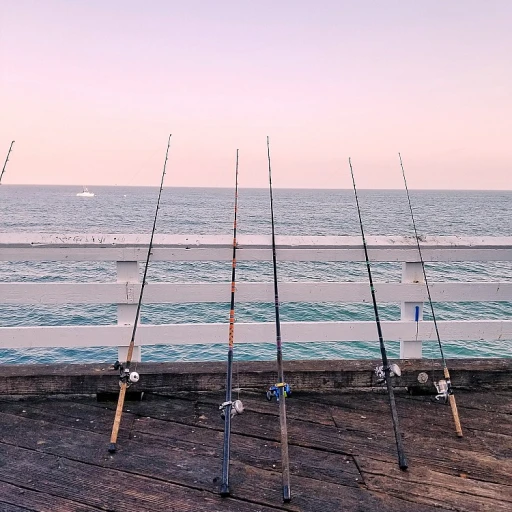
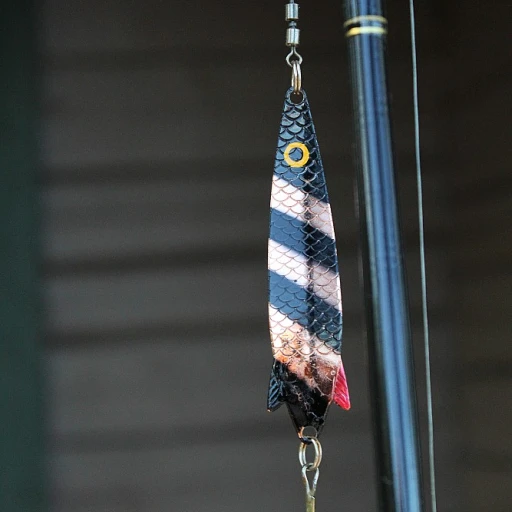

-large-teaser.webp)
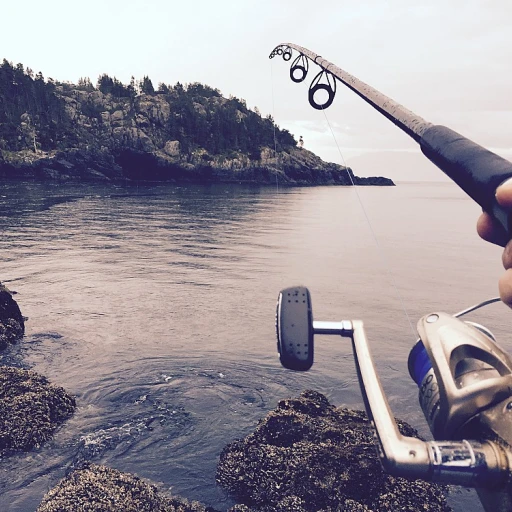
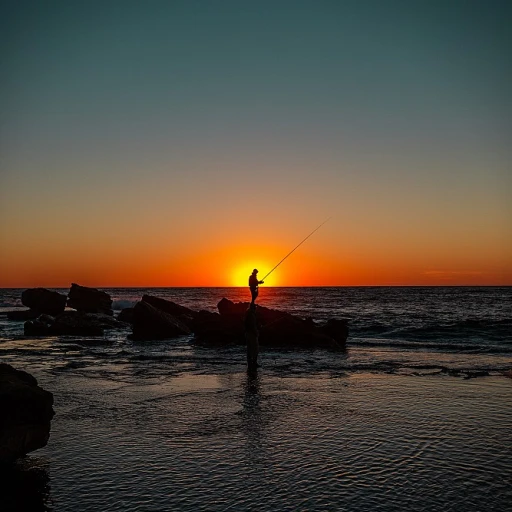
-large-teaser.webp)
